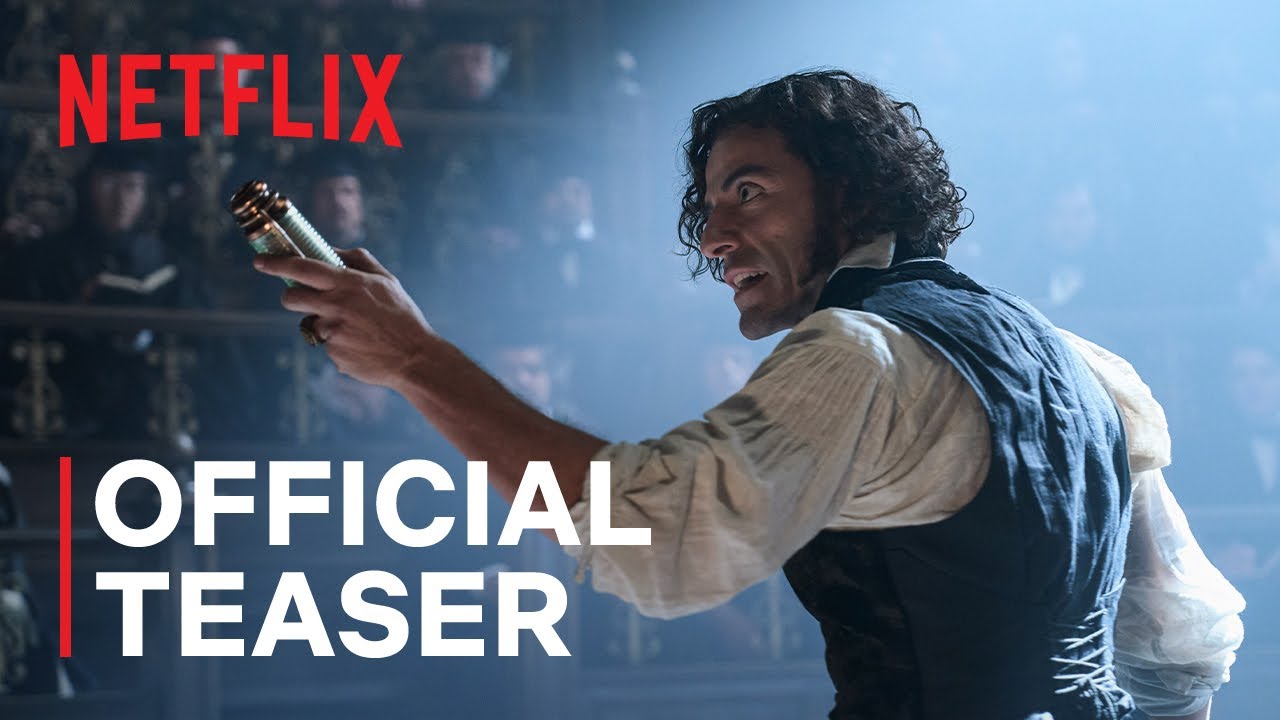Guillermo del Toro’s Frankenstein (2025) Movie Review
Director’s Vision: A Gothic Tale with a Soul
Guillermo del Toro’s Frankenstein (2025) is a striking reimagination of Mary Shelley’s timeless tale.
Rather than leaning into traditional horror, del Toro opts for emotional intimacy and human conflict.
From the outset, the film feels like a deeply personal expression by the director.
Del Toro treats the narrative not just as a gothic story but as a reflection of fatherhood and emotional alienation.
Signature Style: Del Toro’s Creative Blueprint
The visuals in Frankenstein are unmistakably del Toro: gothic yet lush, detailed yet emotional.
Every frame is layered with thematic texture, making this version uniquely identifiable as his work.
He introduces signature elements like tragic beauty, a misunderstood monster, and symbolic lighting.
These creative choices help distinguish the film from previous adaptations or generic retellings.
Characterization and Emotional Range
Jacob Elordi’s portrayal of the Monster offers sorrow, dignity, and yearning.
The audience sees not a threat, but a being desperate for connection and identity.
Oscar Isaac as Victor Frankenstein brings a layered performance—equal parts genius and recklessness.
The friction between creator and creation drives the emotional pulse of the film.
Mia Goth as Elizabeth provides calm to Frankenstein’s chaos, though her screen time is brief.
Her presence underscores the emotional vacuum Victor creates through obsession.
Directorial Choices and Scene Composition
Del Toro structures the film to alternate between sweeping narrative and quiet introspection.
He uses silence and spatial framing to reflect loneliness and isolation.
The flashback sequences with Christian Convery as Young Victor are particularly poignant.
These moments give insight into the scars of Victor’s past and explain his need for control.
Visual Language and Pacing
Unlike traditional monster films, Frankenstein is meditative, not frantic.
Del Toro gives space for audiences to breathe and feel the weight of every decision.
Slow camera pans and long takes allow emotional beats to fully resonate.
Lighting plays a central role, using shadows and muted tones to depict moral ambiguity.
Director’s Inspirations and Influences
The film draws heavily from Universal horror classics while integrating del Toro’s fantasy touch.
There are visual nods to films like The Bride of Frankenstein and The Devil’s Backbone.
His admiration for old European horror cinema is evident in costume design and set architecture.
This blend of homage and innovation makes Frankenstein feel timeless yet new.
Comparing with Del Toro’s Past Works
Frankenstein is spiritually aligned with del Toro’s Pan’s Labyrinth and The Shape of Water.
All three films focus on the outsider, blending fantasy with deep emotional truths.
Unlike his previous films, Frankenstein strips away fantasy realms for emotional reality.
It’s perhaps del Toro’s most restrained yet haunting work to date.
Casting and Performance Breakdown
Each actor contributes richly to the film’s emotional landscape.
Jacob Elordi’s creature is not grotesque but heartbreakingly human.
Oscar Isaac perfectly balances scientific ambition with moral collapse.
Mia Goth adds subtle emotional gravity, while Christoph Waltz injects calculated menace.
Box Office and Anticipation
Though unreleased, early buzz places Frankenstein among 2025’s most awaited films.
Its dark tone and auteur direction appeal to both critics and mainstream viewers.
Streaming on Netflix ensures wide accessibility upon release.
The anticipation suggests strong box office and award season impact.
Supporting Characters and Depth
Characters like Professor Krempe and the Blind Man add moral complexity.
They challenge Victor’s hubris and offer kindness to the Monster.
Each supporting role enhances the moral and emotional themes of the story.
No character feels wasted; everyone plays a part in the film’s emotional journey.
Final Thoughts on Direction and Execution
Guillermo del Toro’s Frankenstein is not a monster film—it’s a meditation on loneliness.
By centering empathy, the director gives the story new emotional life.
It’s a masterpiece in direction, balancing literary legacy with cinematic innovation.
This version of Frankenstein isn’t just worth watching; it’s worth feeling.
Star Rating Table
| Aspect | Rating (out of 5) |
|---|---|
| Direction | 5.0 |
| Storytelling | 4.5 |
| Performances | 4.5 |
| Visual Style | 5.0 |
| Overall | 4.5 |
Note: The star rating is provisional and may vary based on full release and audience reception.
FAQs
Question 1
What makes Guillermo del Toro’s Frankenstein different from other versions?
Answer 1
Del Toro’s version emphasizes emotional depth and empathy over horror, making the Monster a tragic figure rather than a threat.
Question 2
How does the film reflect Guillermo del Toro’s style?
Answer 2
It includes his trademark gothic visuals, emotional storytelling, and themes of isolation and compassion, evident in every frame.
Question 3
Is the film suitable for a younger audience?
Answer 3
While it’s not a typical horror film, its mature themes and emotional intensity may be better suited for older teens and adults.
Question 4
Does the film feature traditional horror elements?
Answer 4
No, it avoids conventional jump scares and gore, opting instead for a thoughtful and emotional narrative approach.
Question 5
What are the chances of this film winning awards?
Answer 5
Given del Toro’s track record and the film’s craftsmanship, it’s likely to be a strong contender during award season.



